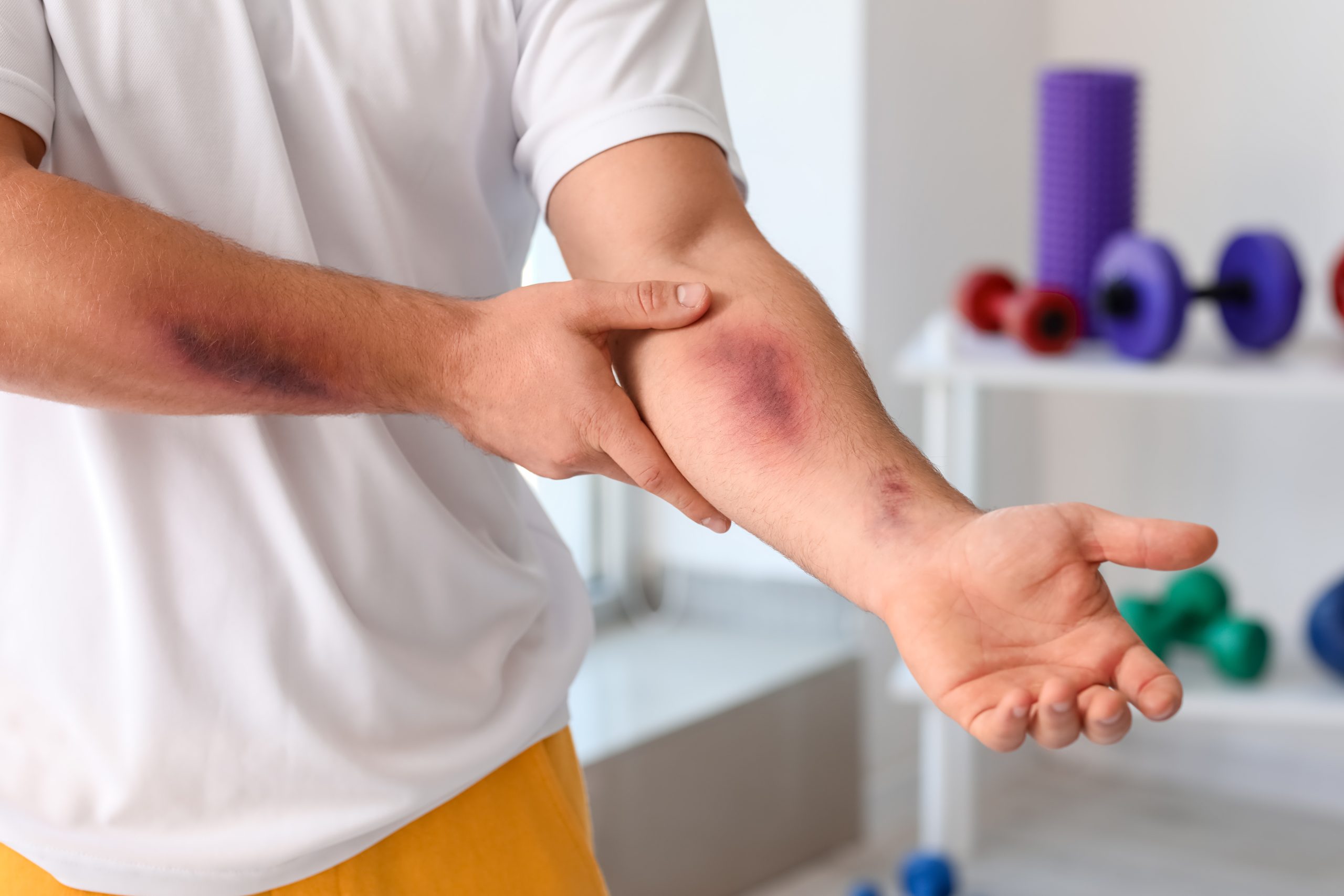

Bleeding and Bruising easily – Causes, Diagnosis, and Treatment at Emirates Hospital Group
Easy bleeding and bruising, also known as increased bleeding tendency, can be a sign of an underlying medical condition. It’s important to understand that while occasional bruising is a normal part of life, frequent or excessive bruising, especially from minor injuries, should not be ignored. Similarly, any unusual or prolonged bleeding, such as nosebleeds that are difficult to stop, bleeding gums, or heavy menstrual periods, warrants medical attention. These signs can indicate problems with your blood’s ability to clot properly, which can be caused by a variety of factors. Therefore, if you’re experiencing these symptoms, it’s crucial to seek medical advice to determine the cause and receive appropriate treatment.
Causes:
Several factors can contribute to easy bleeding and bruising, including:
- Platelet disorders: Platelets are blood cells that help form clots. Conditions like thrombocytopenia (low platelet count) or platelet dysfunction can impair clotting.
- Clotting factor deficiencies: These are inherited disorders where certain proteins needed for blood clotting are missing or deficient. Hemophilia is a well-known example.
- Medications: Certain medications, such as anticoagulants (warfarin, heparin) and antiplatelet drugs (aspirin, clopidogrel), can increase the risk of bleeding. Even over-the-counter pain relievers like NSAIDs can contribute.
- Vitamin K deficiency: Vitamin K is essential for blood clotting. Deficiency can occur due to poor diet, certain medical conditions, or long-term antibiotic use.
- Underlying medical conditions: Liver disease, kidney disease, and certain cancers can also affect blood clotting and lead to easy bleeding and bruising.
- Connective tissue disorders: Conditions like Ehlers-Danlos syndrome can cause fragile blood vessels, leading to easy bruising.
Diagnosis:
A doctor will take a thorough medical history, including any medications you are taking, and perform a physical exam. Diagnostic tests may include:
- Complete blood count (CBC): To assess platelet count and other blood cell levels.
- Blood clotting tests: Such as prothrombin time (PT) and partial thromboplastin time (PTT) to evaluate how well your blood clots.
- Peripheral blood smear: To examine blood cells under a microscope.
- Liver and kidney function tests: To assess organ function.
- Vitamin K level: To check for vitamin K deficiency.
Treatment:
Treatment depends on the underlying cause.
- Platelet disorders: Treatment may involve medications to increase platelet count, platelet transfusions, or treating the underlying cause.
- Clotting factor deficiencies: Treatment may involve replacing the missing clotting factors.
- Medication-related bleeding: Adjusting the dosage or switching medications may be necessary.
- Vitamin K deficiency: Vitamin K supplements may be prescribed.
- Underlying medical conditions: Treating the underlying condition is crucial.
It is essential to consult a doctor if you experience frequent or unexplained bleeding or bruising. Early diagnosis and treatment can prevent complications and improve outcomes.
Related Treatments
Request an appointment
Please complete the details and we will book you shortly.
